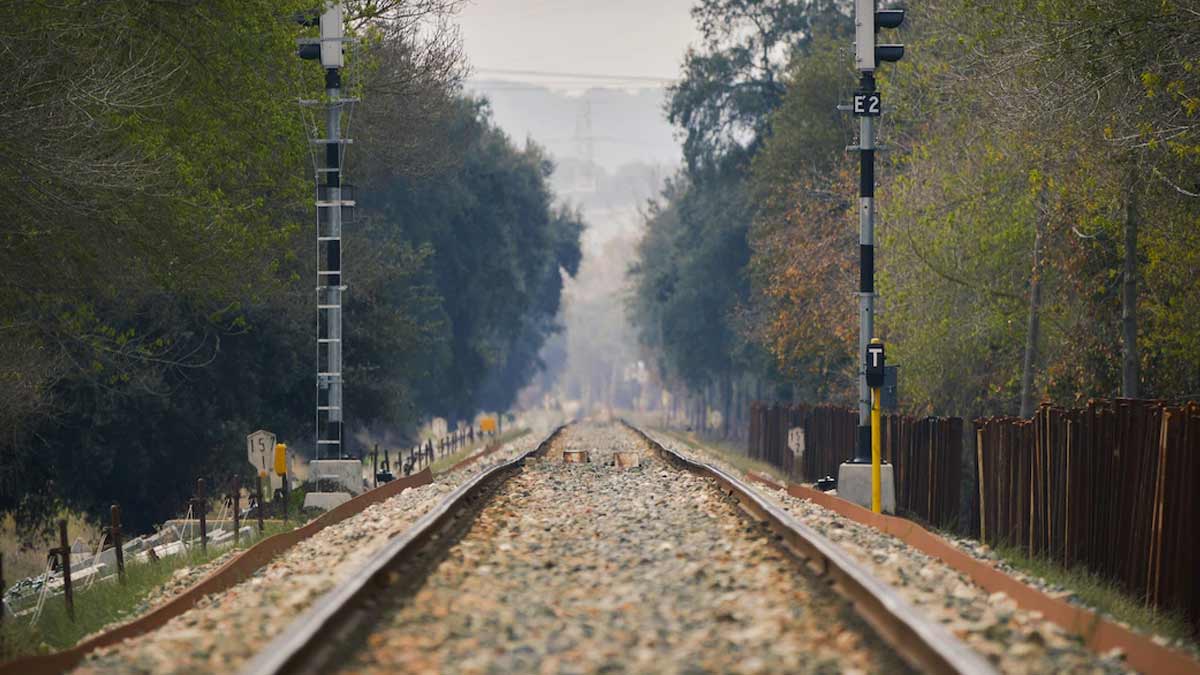
Stones On Railway Track: Scientific Reason Behind It
Have you ever noticed why the gaps in railway tracks are filled with stones? Have you ever wondered why railway tracks do not have a soil base? Well! This article will answer all your questions.
The one thing that we are clear about is that these stones are not there for the show. Also, do you know that this phenomenon is opted all around the world and not just by Indian Railways? Let’s read about it.
What Do We Call These Stones On Railway Tracks? (What Is Track Ballast?)
There is a collective term for the crushed stones laid on the railway lines around the world. It is called track ballast. They are not only used to create a solid bed or base for railway tracks but also to cover it on the outer sides.
They form a solid ground for railway sleepers to which tracks are laid perpendicular. It helps to keep the iron-clad tracks upright and parallel. Without this base, the train can tumble and lead to any number of accidents.
Initially, these sleepers were made of wood. However, these days, engineers use advanced technologies to stress a rectangular piece of concrete and lay it on the ground. These railway sleepers are also called crosstie or railroad ties.
Is There Any Specific Variety Of Stones Laid On The Railway Tracks? (Stones On Tracks)

Yes, engineers have been using a specific variety of stones. They cannot just make a bed for tracks using any kind of stones. These specific stones do not move or tumble when a heavy train passes through the tracks. They can bear high-frequency vibrations that even leave grounds shaking seconds and minutes after a train passes by.
If engineers use the round glassy pebbles that we find on the river bed and near oceans, they would not have served the purpose of keeping the railway sleepers in place. It would eventually result in an accident. The sharp and roughly edged stone serves the purpose all around the globe.
What Are The Other Reasons For Laying These Stones On Railway Tracks? (Indian Railway)
- A crucial use of these stones is to prevent vegetation from growing. If you have ever touched the soil near farms, you know that it is soft. If the ground below railway tracks becomes soft, it can lead to accidents.
- The sharp stones also allow heavy rains to pass through and penetrate deep into the ground. It also prevents the immediate top layer from getting soft.
- The stones also prevent water from damaging railway tracks. It also prevents the storage of water on the railway line.
Don't Miss: Road Trip Vs Train Trip Vs Fligh Trip
Maintenance Of Track Ballast (Railway Tracks)
- If the ballast is found clogging water, the authorities and engineers move ahead with cleaning and replacing.
- Indian Railway (First 'Pod Hotel) authorities ensure to check the condition of the ballast on a track and inspect its stability to bear heavy vibrations.
Don't Miss: Mumbai - New Delhi Rajdhani Turns 50
5 Interesting Facts About Indian Railways

- Gorakhpur Railway Station is the longest platform in India, stretching to 4,430 feet. Initially, it was Kharagpur Railway Station (2,733 feet in length).
- There are five luxury trains running under Indian Railways - The Golden Chariot, Royal Rajasthan on Wheels, The Deccan Odyssey, Palace on Wheels and The Maharaja’s Express.
- Mathura Junction has the maximum number of routes emerging from the railway station.
- Indian Railways is the third largest railways network in the world. The length extends to 127,760km. However, it is the largest network operated and administered by a single government body.
- There are two Indian Railway elements that are a part of UNESCO World Heritage Sites - the Indian Mountain Railways and the Chhatrapati Shivaji Terminus.
Stay tuned with HerZindagi for more such stories!
Also watch this video
Herzindagi video